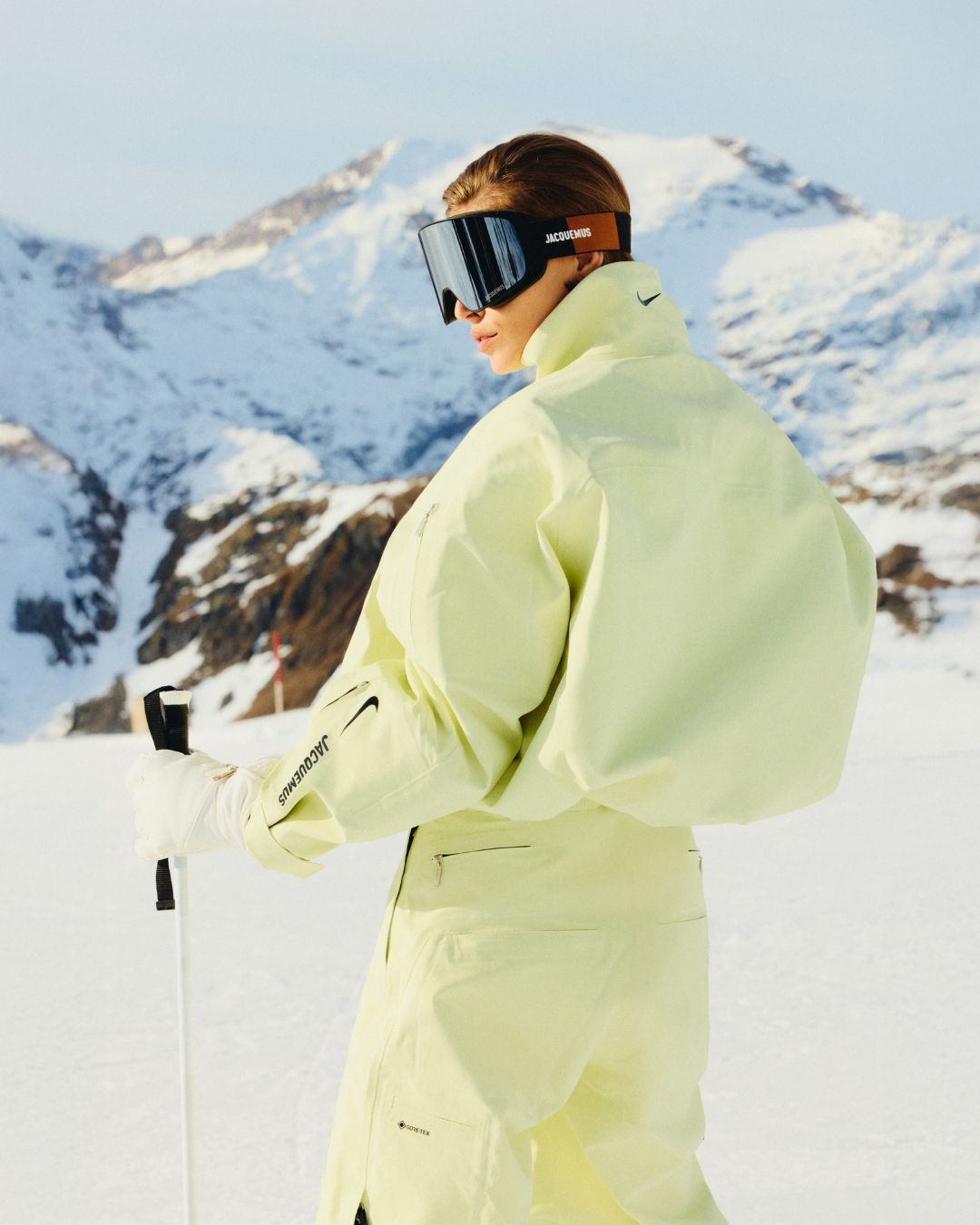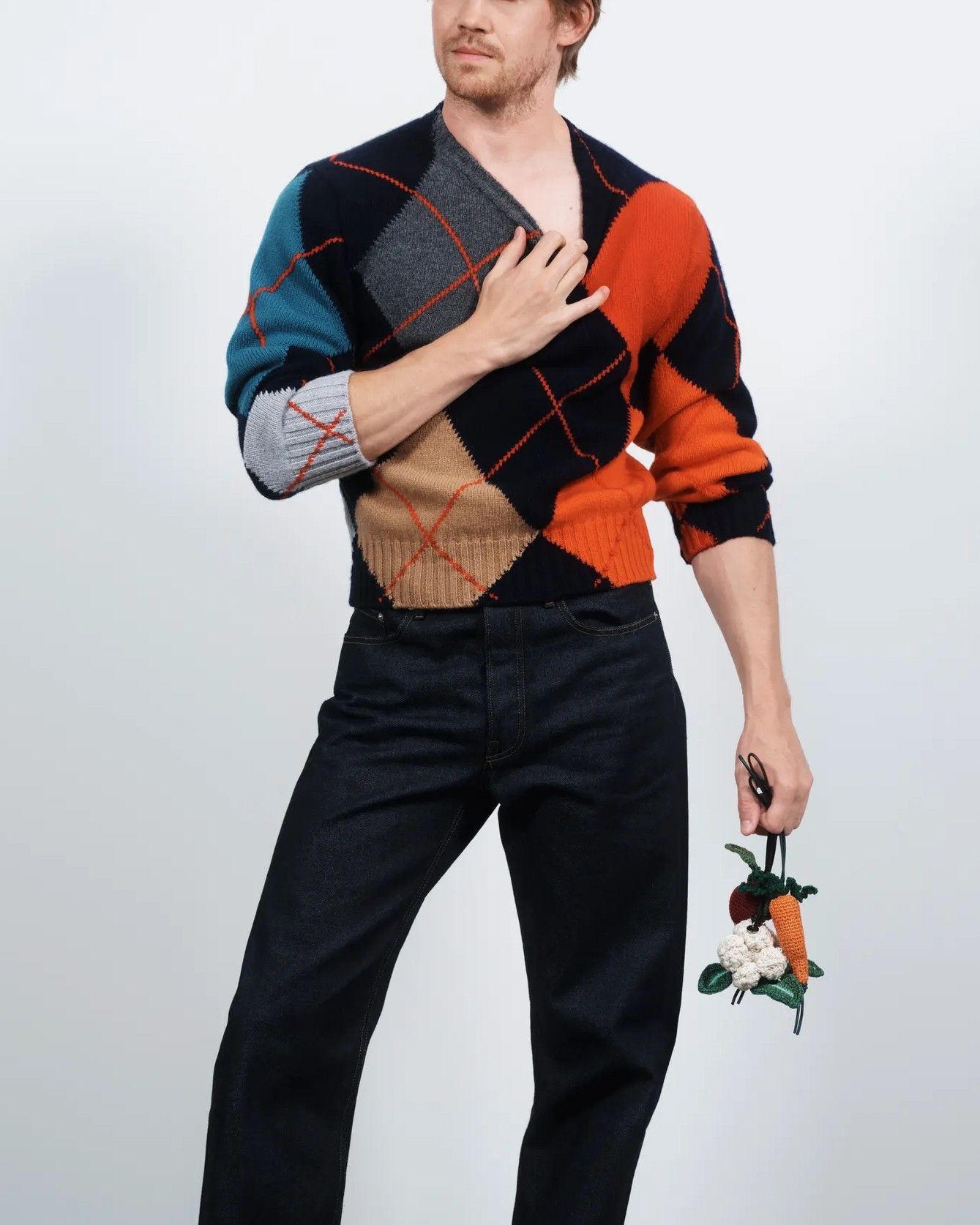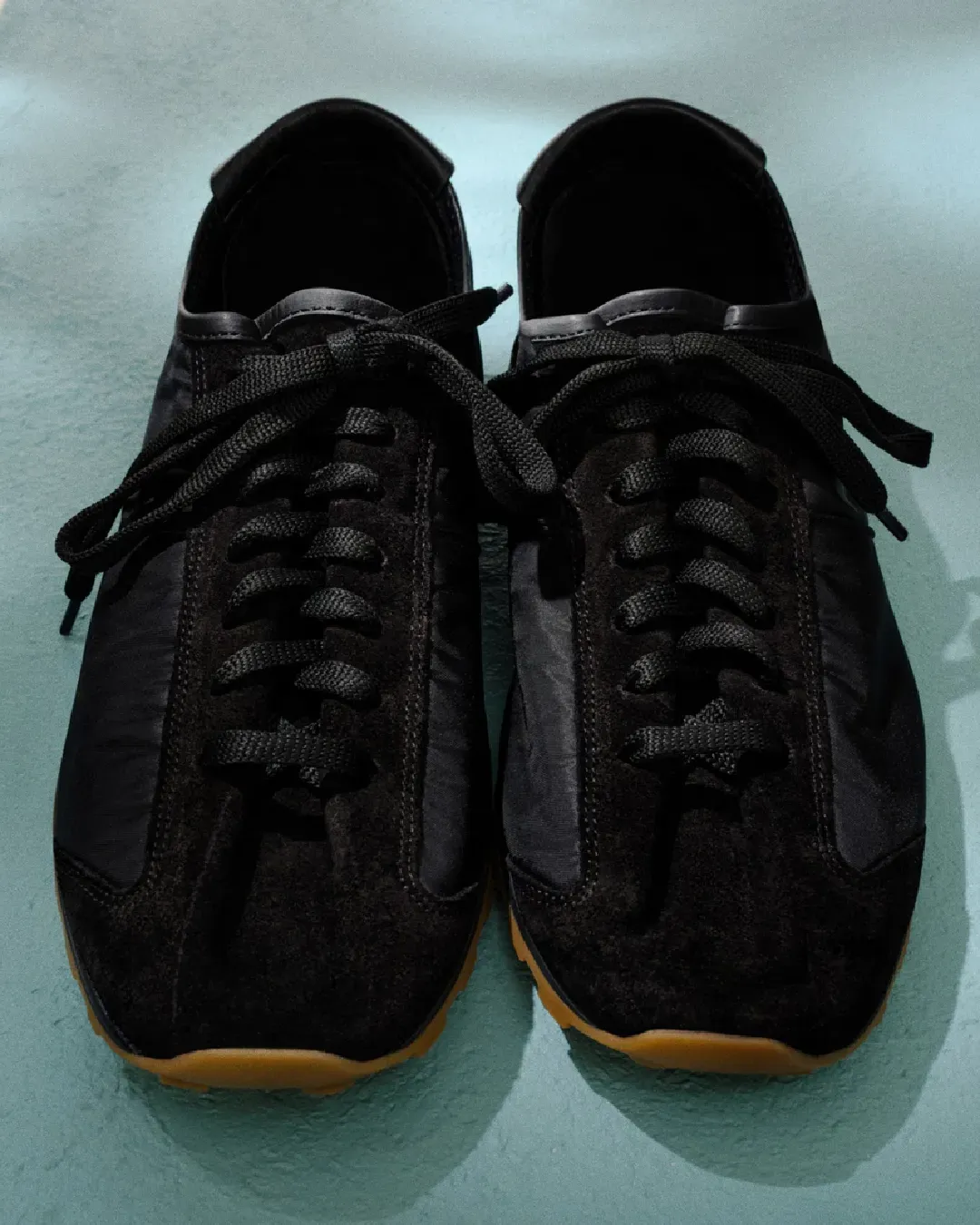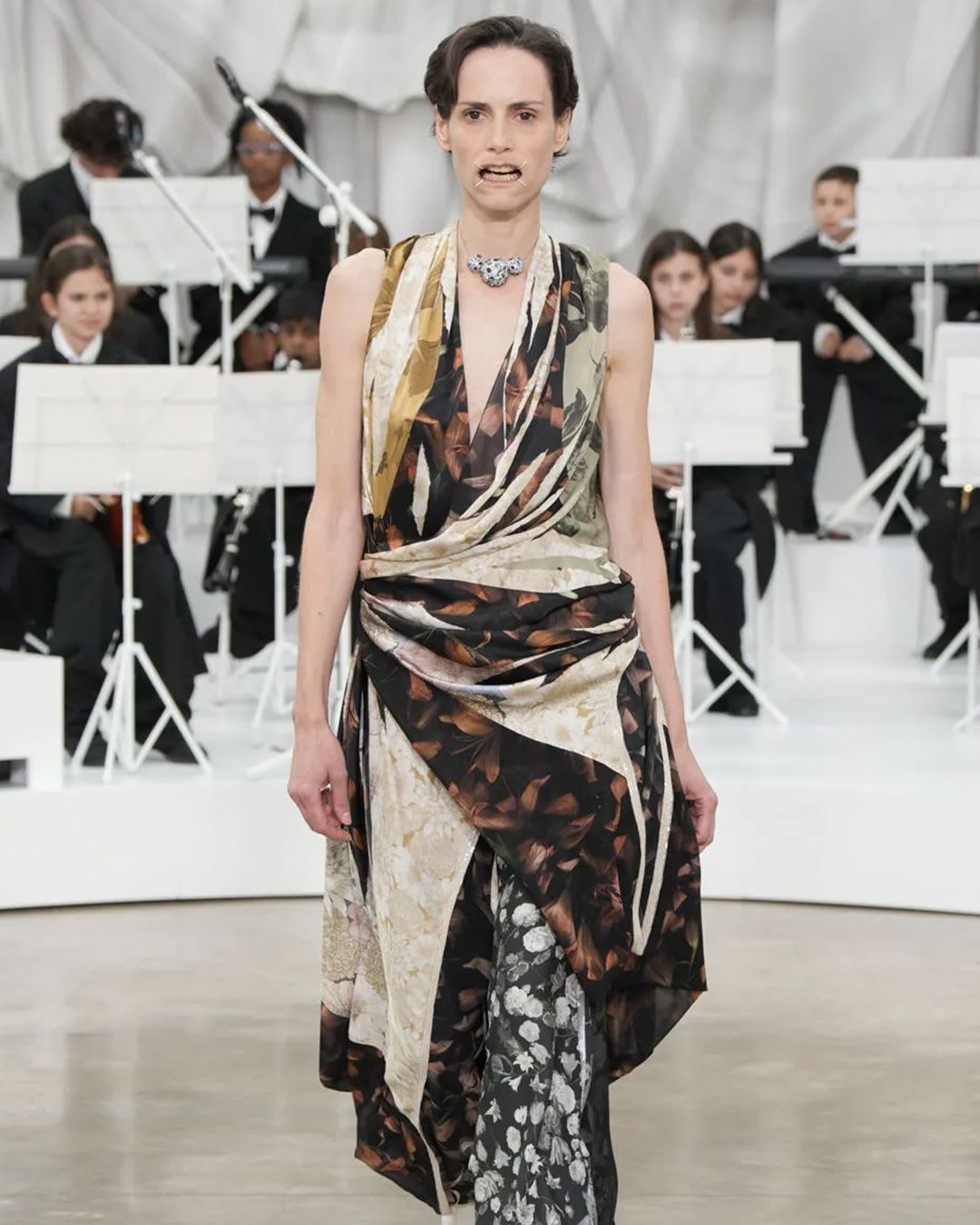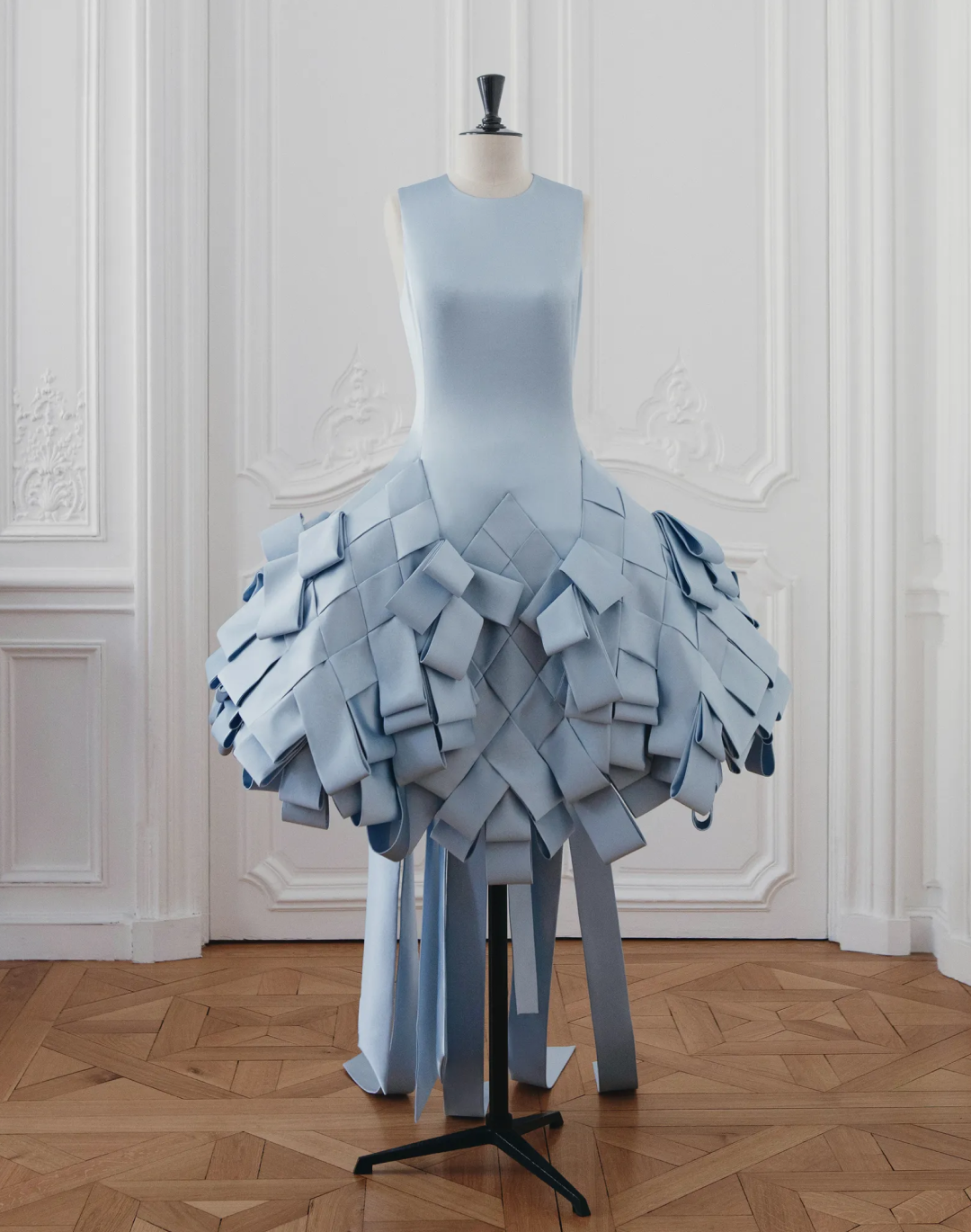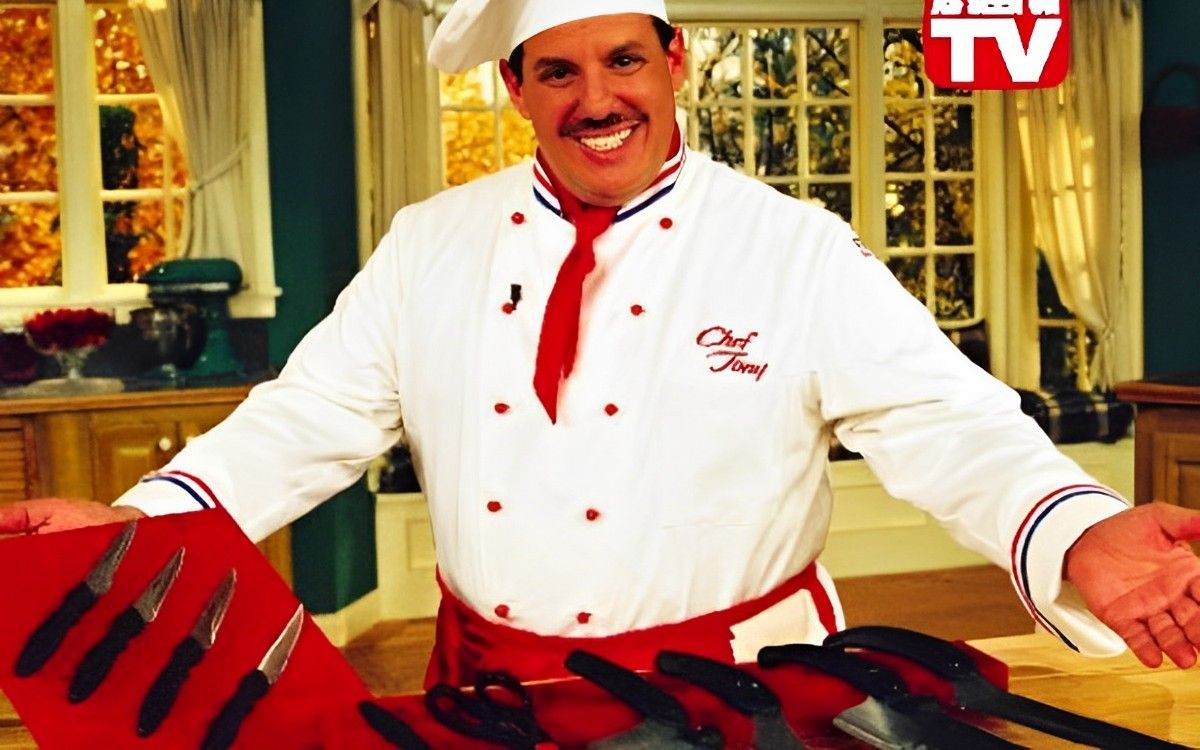
The nostalgic cringiness of infomercials From national-popular marketing to ironic fashion showcase
There was an era, predating social media, when the sale of unusual, interesting or extraordinarily affordable products passed through infomercials and teleshopping. Recently, it was the @whoopsee.it page that reenacted that TV world that, in Italy, was populated by now mythical characters such as Roberto "Baffo" Da Crema, Jill Cooper, Giorgio Mastrota, Sergio Baracco and the legendary Chef Tony who, in his TV studio, sliced any conceivable object with his Miracle Blades. Teleshopping in Italy persuaded the generation of grandparents to shop, who bought paintings, pots and pans and mattresses with joyful abandon; but they were a kind of caravan of wonders for their grandchildren, who scouted out its endless episodes in the secondary channels of the schedule, discovering from time to time such contraptions as the Rosticcere, the miraculous Tesmed, multifunction blenders, the Giorno & Notte diet pills, contraptions like Fast Clean that cleaned pipes with compressed air, Persian jewelry and carpets, and you name it. Conquering, more than the products, were the telemarketers: people of the people, screaming hammy salesmen, colorful mummers who climbed on the tables, promised the moon, and uttered phrases so off-the-wall they became memes. On closer inspection, in fact, infomercials all over the world resemble each other: the low quality of the video, the overlay lettering filled with numbers and slogans in large print, the table on which the merchandise du jour is arranged, and, of course, the persuasive and theatrical presence of the salesman. It is a kitschy and completely over-the-top world that not only received endless parodies a decade ago (from Lucia Ocone's Veronika to Fichi d'India and Guzzanti) but which, twenty years later, Millennial designers have co-opted, tacking on a parody of the set and elitist fashion marketing.
The most recent fashion brand to embrace the full locura of infomercials was Stella McCartney, whose founder and creative director backcombed her hair to the nines, donned goggles and tiger fur, and warbled promotion of her shoes and handbags. Also recently, it was Jacquemus' turn to push his Chiquitos by transforming supermodel Mica Argañaraz into a brawny saleswoman dressed in shocking pink. The real master of this art, however, is Telfar Clemens, who has transcended the very idea of parody with his Telfar TV, transforming social media marketing into a kind of big jet-setting show where TikTok videos, choreography, guest starring members of the queer community and authentic Telfar appearances on Fox TV are mixed together to create an intensified, hyper-expressive and communal reality that has also become one of Telfar's stylistic hallmarks over the years. Gucci also exploited the TV commercial format in Christmas 2021, for Gucci Beauty, but creating a kind of Christmas special adjacent to but not overlapping with actual infomercials. Before all of them, however, came Jonathan Anderson, who promoted the SS19 season handbag collection with JWA-TV, a mock program in which three ladies covered in truckloads of make-up promoted products with that same theatrical verve.
Although it would be impossible to call this parody/advertising format a true narrative current or trend, it is worth noting how the telesales plot periodically returns in brands' marketing campaigns keeping always identical to itself. Oddly enough, the very infomercials, kept safe in the sanctuary of regional TV channels, have not evolved over the years: even today Mondial Casa sells batteries of pots and pans, and Eminflex's image girls caress the slats of double beds in white slip dresses. Today, as then, the products sold are all-encompassing, from comforter covers to works of art, from emerald necklaces to blenders, via beauty products, air conditioners, Japanese antiques, gym equipment, lawn mowers, mobility scooters for the elderly, and you name it. In recent times, the format has been updated with mixed success, moving from telemarketers to the mega online marketplaces of Amazon and AliExpress, to influencers and YouTubers but especially to the creators of TikTok, who, thanks to the new (and controversial) live shopping feature, can sell products during their live broadcasts - a format that apparently has not taken root well in the West but is going strong in China. It is clear, however, that the myth of infomercials, also not without its shadows, the biggest of which is that of Wanna Marchi, is less about the quality of the products being sold and more about the surreal, bizarre narrative style adopted, whether it is the "Italian-style" infomercial, with the barker haranguing the crowds by screeching and monologuing like a mad thespian, or the "American-style" one that instead smiling robot-like presenters, black-and-white demonstration videos contrasting with the bright colors of the studio, and a tendency to test the products sold in the strangest ways, such as Chef Tony, who was not a real chef of course, and who with his Miracle Blade began by slicing tomatoes and bread and ended up cutting wire mesh, work boots, and the cutting board itself.
@renato_crudo Il re delle televendite! Il grande Chef Tony!#pubblicità #ipnosi #televendita #andiamoneiperte #pt #chenesannoi2000 #virale #neipertee suono originale - Renato_Crudo
Yet it is still true that in the minds of most of the population (we speak for the Italian population) the word "infomercial" is synonymous with "scam" - a more or less famous case was the collapse of the Genoese D'Anna dynasty in 2016, which, after arrests, seizures, annulled trials and a huge number of preliminary hearings, went back to selling on television. To make a long story short, there is a gulf between the real fashion clientele and the infomercials clientele, but then why does fashion continue to celebrate their unrelenting bad taste? On the one hand we could speculate at a kind of "fetishization of the lower classes," transforming a marketing aimed at those classes into lighthearted parody of luxury for the sake of variety and irony; on the other hand we could read in the rediscovery of the format of infomercials, in the somewhat corrupted pleasure derived from their manifest, almost ostentatious vulgarity, a vein of nostalgia toward a more spontaneous, face-to-face and less filtered way of communicating than we experience today. With their sweaty, screaming reality, infomercials remind us of a time when marketing was perhaps less subtle but also infinitely more volcanic, human and fun than whatever pre-packaged desserts the big brands put in front of us today.










































